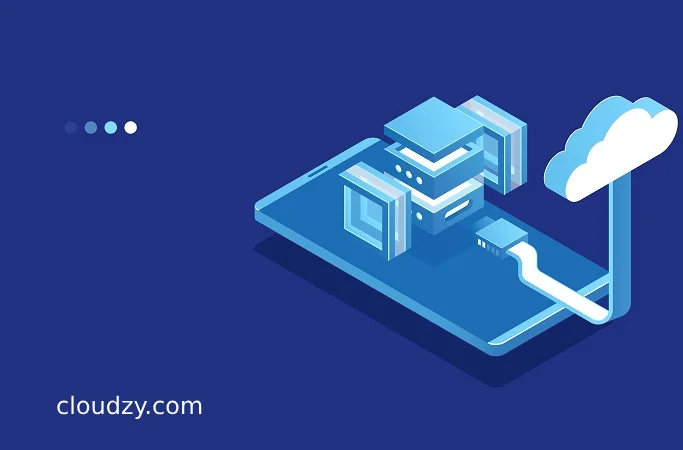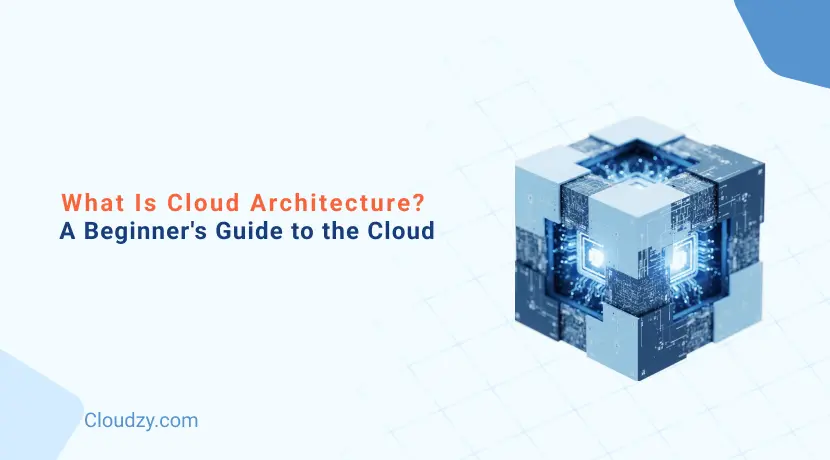Cloud architecture is the backbone of modern cloud computing, serving as a blueprint for how cloud components hardware, software, networks, and services together to deliver scalable, secure, and efficient IT solutions. Whether you’re a business owner exploring cloud adoption or an IT professional diving into cloud technologies, understanding cloud architecture is key to making informed decisions. This guide breaks down the essentials, from core components to benefits and challenges, in a way that’s clear and actionable.
What Is Cloud Architecture?

Cloud architecture defines how technology components like servers, storage, software, and networks integrate to create cloud computing environments. Think of it as a blueprint for a house, outlining how rooms (resources) connect to meet specific needs, like scalability or security. Unlike traditional IT, which relies on on-premises hardware, cloud architecture uses virtualized resources accessible online, enabling businesses to scale without managing physical servers.
Cloud Architecture vs. Cloud Infrastructure
While related, these terms are distinct:
Cloud Architecture: The strategic design of how cloud components interact to meet business goals.
Cloud Infrastructure: The physical and virtual resources (e.g., servers, storage) that power the cloud.
| Aspect | Cloud Architecture | Cloud Infrastructure |
| Definition | Blueprint for cloud component interaction | Hardware and software powering cloud services |
| Focus | Design and organization | Physical and virtual resources |
| Purpose | Strategic planning | Resource implementation |
Key Components of Cloud Architecture
To grasp cloud architecture, you need to understand its core building blocks:
Frontend Platform
The frontend is the client side of cloud architecture—what users actually interact with directly. This includes web browsers, mobile apps, and desktop applications that connect to cloud services.
Backend Platform
The backend is the heart of cloud computing—servers, storage, and computational resources that power cloud services. This layer includes physical servers, virtual machines, storage systems, management tools, and security systems.
The backend handles stuff like data processing, application logic, and resource management. It fulfills requests from the frontend and delivers the services or information requested.
Cloud Delivery Model
The delivery model defines how cloud services reach users, including the service model (IaaS, PaaS, or SaaS), login controls, API management, and service coordination.
Network Infrastructure
Networks are the connecting tissue of cloud architecture, linking frontend and backend components. This includes internet connectivity, internal networks, VPNs, CDNs, and load balancers.
Types of Cloud Architecture
Cloud architectures come in several flavors, each with characteristics suited to different business needs:
Public Cloud Architecture
Public cloud architecture uses computing resources owned and operated by third-party providers that are made available to multiple customers. Organizations access these shared resources over the internet, benefiting from economies of scale without needing to manage the underlying infrastructure. Amazon Web Services (AWS), Microsoft Azure, and Google Cloud Platform follow this model.
Private Cloud Architecture
Private cloud environment architecture dedicates cloud resources to a single organization. These resources can be hosted on-premises in the organization’s data center or by a third-party provider. Unlike public clouds, private clouds offer greater control over security, compliance, and customization.
Hybrid Cloud Architecture
Hybrid cloud architecture combines public and private clouds, allowing data and applications to move between them. This approach lets organizations keep critical systems in private environments while leveraging public clouds for less sensitive workloads or to handle overflow during peak demand.
Multi-cloud Architecture
Multi-cloud architecture involves using services from multiple cloud providers. This approach helps organizations avoid vendor lock-in and choose the best services from each provider.
A comparison of these cloud types:
| Type | Control | Security | Best For |
| Public | Limited | Good (provider-managed) | Startups, variable workloads |
| Private | High | Very high (customer-controlled) | Regulated industries, sensitive data |
| Type | Control | Security | Best For |
| Hybrid | Balanced | Customizable by workload | Diverse workloads |
| Multi-cloud High (avoids lock-in) | Complex (multiple models) | Large enterprises, specialized needs | Cloud Service Models |
Cloud architecture supports three main service models:
Infrastructure as a Service (IaaS): Rent virtual machines, storage, and networks. Users manage operating systems and applications.
Platform as a Service (PaaS): Provides development environments, simplifying app creation without infrastructure management.
Software as a Service (SaaS): Delivers fully functional software via the internet, eliminating maintenance hassles.
The cloud market is booming, with IDC forecasting public cloud spending to hit $805 billion in 2025, doubling by 2028 at a 19.4% annual growth rate.
Cloudzy VPS Solutions for Cloud Architecture
A robust cloud architecture starts with reliable infrastructure. Cloudzy (VPS server cloudsolutions) including Linux and Windows VPS, offer high-performance 4.2+ GHz vCPUs, DDR4 memory, and NVMe/SSD storage. Their PROFESSIONAL Linux VPS plan, with 8 GB DDR4 memory, 4 vCPUs, and 240 GB NVMe storage, is tailored for cloud architecture needs.
For specialized cloud architectures, Cloudzy offers:
- Forex VPS plans with pre-installed Meta Trader 4, supporting financial trading architectures with minimal latency
- RDP VPS solutions enabling seamless remote desktop access within hybrid cloud architectures
- GPU VPS services (featuring RTX 4090 options) providing computational power for AI components
Each plan includes bandwidth allocations ranging from 1TB to 16TB with 10 Gbps connection speeds to prevent bottlenecks in cloud architecture data flows.
Benefits of Cloud Architecture
A well-designed cloud architecture delivers:
Scalability and Flexibility
Cloud architecture lets businesses scale resources up or down based on demand. This eliminates the need to build infrastructure for peak usage scenarios, which often leaves resources underutilized during normal operations.
Cost-effectiveness
By moving from capital expenditure (buying hardware) to operational expenditure (paying for services as needed), organizations can better manage IT costs. Cloud adoption isn’t just trendy—it pays off big time.
Deloitte research found SMBs using cloud tech grew 26% faster and pulled in 21% more profit, though businesses needed at least 60% of workloads cloud-based to see real financial impact. Cloud architecture enables businesses to pay only for what they use, avoiding overprovisioning and wasted resources.
Faster Deployment and Time to Market
Cloud architecture supports rapid provisioning of resources, allowing new projects to launch quickly. Developers can access computing environments in minutes rather than weeks, significantly accelerating development cycles.
Innovation Opportunities
Access to advanced technologies like artificial intelligence, machine learning, and big data analytics becomes more feasible with cloud architecture. Organizations can experiment with cutting-edge tools without significant upfront investment.
High Availability and Reliability
Modern cloud architecture incorporates redundancy and fault tolerance across multiple geographical locations. This design principle ensures applications remain available even during hardware failures or regional outages.
Challenges of Cloud Architecture
Despite its many benefits, cloud architecture also presents several challenges:
Security Considerations
While cloud providers offer strong security measures, organizations must still properly configure their environments and implement appropriate access controls. The shared responsibility model means customers retain accountability for securing their data and applications.
Managing Scalability Costs
While scaling is technically simple, costs can increase rapidly without proper governance. Cloud architecture should include monitoring and optimization mechanisms to prevent unexpected expenses.
Network Dependency Issues
Cloud-based systems rely heavily on internet connectivity. Organizations must design for network limitations, potentially incorporating offline capabilities or redundant connection paths.
Conclusion
Cloud architecture is the foundation of modern IT, enabling businesses to leverage scalable, cost-effective computing without physical infrastructure. Gartner predicts 70% of tech workloads will be cloud-based by 2028, up from 25% today, as companies view the cloud as essential. By mastering cloud architecture components, types, and benefits, organizations can align their strategies with business goals.
As cloud technologies evolve, architectures will integrate edge computing, serverless models, and AI. Providers like Cloudzy, with versatile VPS solutions, empower businesses to build flexible, high-performance cloud environments tailored to their needs.





One Response
The house blueprint analogy really helped clarify cloud architecture for me—it’s a simple but effective way to understand such a complex system. It might also be helpful to explore how modern approaches like microservices architecture fit into this design framework.